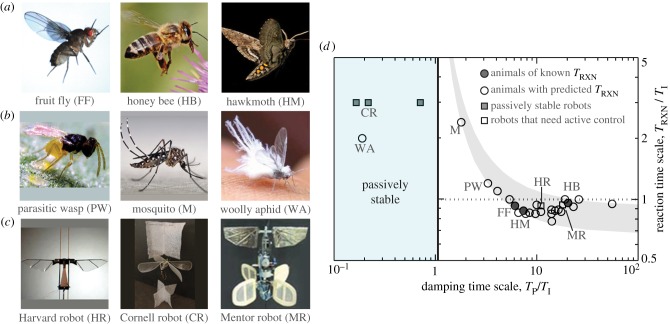Figure 7.
Control requirements for hovering insects, hummingbirds and flapping-wing robots. (a) Insects of varying size whose reaction time has been measured or estimated: fruit fly (typical body length 2.7 mm), honeybee (16 mm) and hawkmoth (46 mm). (b) Insects with unusual damping characteristics. The viscous drag on the body of the tiny wasp (0.6 mm) is significant, the mosquito (4.4 mm) flies with its long legs extended and the woolly aphid (3.2 mm) has a fibrous coat. (c) Robots with different stabilization strategies: Harvard robot (15 mm) is externally stabilized with wire guides; Cornell robot (220 mm) has large sails; Mentor robot (360 mm) uses sensory feedback control. (d) Reaction time needed to stabilize flight for hovering animals (circles) and robots (squares). Reaction time is known for the fruit fly, honeybee and hawkmoth (filled circles) and predicted for other flyers (open symbols). Predictions are determined by the rule of thumb that reactions must be six times faster than the instability, with variations within the grey band due to differences in the unplotted parameter TF/TI. (Online version in colour.)

